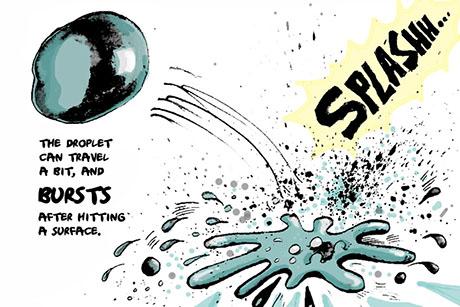Talking Shop with Associate Professor Domitilla Del Vecchio

Domitilla Del Vecchio works on intelligent transportation systems that communicate to prevent collisions.
What areas does your research focus on?
Broadly speaking, my group works in control systems, which are systems for which you have to design something that works autonomously. We have two main applications: one is intelligent transportation systems and the other is biomolecular circuits.
For transportation, we are working on designing on-board vehicle controllers that communicate with each other to predict and prevent collisions at intersections. We are simultaneously working on the design of small biomolecular circuits within cells to control cellular behavior. Our focus is on understanding the fundamental principles by which you can create these designs modularly, starting from smaller components and putting them together to make bigger systems.
What is your current focus as you research these two areas?
Transportation systems involve a lot of vehicles and agents, as well as communication among those agents. There are severe complexity issues in solving this design problem, because if you start looking at all the possible ways in which agents can interact, you get an exponential explosion of the number of possibilities. Let’s say you have a very busy intersection and you have 15 vehicles all merging at an intersection – some are closer, some are farther, and their speeds are all different. How can you tell each of the drivers what they should do to avoiding crashing? A naïve way to solve the problem would be to look at all possible combinations of all those variables, because if you have 15 cars, this type of computation is going to take forever.
The question I’ve been trying to answer is, how do you exploit the specific structure of the problem at hand to discover ways in which you can reduce complexity? In my research, we exploit what we call partial order structures to reduce the complexity from exponential to linear. We exploit the fact that vehicles evolve unidirectionally on roads, so that higher speeds and higher accelerations will result in higher displacements. This property is a key enabler for reducing complexity.

Del Vecchio’s secondary research focus is on the design of small biomolecular circuits within cells to control cellular behavior.
I have also been focusing on how to incorporate human operators in the design of an autonomous system. We have made initial discoveries about easy ways to incorporate simple behavior and take into account what the human is doing in order to take safe next steps. Specifically, we are designing autonomous on-board systems that estimate the intention of human-driven vehicles at an intersection and use this information to design safe maneuvers.
In cellular research, the hardware we use is not electronic mechanical – it’s actually biomolecular. When you compose systems together, you get effects that are similar to impedance in electrical circuits that we call retroactivity. When a system is connected to another one, loading effects due to the interconnection change the system behavior. We have experimental results that show that these things exist, and we are currently trying to use control theory to design systems that are insensitive to the presence of this impedance.
For the application of control theory to the biomolecular area, the goal is to understand how one can use the specific mechanism you have in biological systems to modify or come up with new control techniques that are useful in that new domain.
What is the real-world application for your biomolecular research?
The application is very long term for this, because it’s still at the initial stages, but one of the applications we’re working on is bio-sensing systems that can detect a special molecule in the environment, determine whether it’s dangerous, and then make it visible to the eye. Even longer-term applications involve targeted drug delivery that involves designing cells that can be placed in the bloodstream and directed to chase down pathogens and cancer cells directly. The biological infrastructures are already there, so we’re trying to take pieces out and combine them to achieve the end functionality we’re looking for.
Are there any precedents for the type of advancements you’ve mentioned?
From the principles point of view, for transportation systems, we are building on a lot of existing work on how human behavior can be modeled and how to design safe systems and guarantee their safety. We are trying to combine the two by bringing in the human factors without giving up guarantees of safety. For intelligent transportation in general, there is a lot being brought to the market right now – for example, there is the automatic adaptive cruise control, one of the oldest smart transportation technologies. Now companies are trying to use the fact that vehicles can communicate with each other to make more complicated things. This is where we can make a valuable contribution.
On the other hand, control theory had not been widely applied to the design of biomolecular systems before four or five years ago, so there is a lot of room for advancement there.
“The question I’ve been trying to answer is, how do you exploit the specific structure of the problem at hand to discover ways in which you can reduce complexity.”![]()


